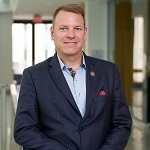Circumscribing Laser Cuts Attenuate Seizure Propagation in a Mouse Model of Focal Epilepsy
This webinar is hosted By: Therapeutic Laser Applications Technical Group
15 December 2022 13:00 - 14:00
Eastern Time (US & Canada) (UTC -05:00)In partial onset epilepsy, seizures arise focally in the brain and often propagate. Patients frequently become refractory to medical management, leaving neurosurgery, which can cause neurologic deficits, as a primary treatment. In the cortex, focal seizures spread through horizontal connections in layers II/III, suggesting that severing these connections could block seizures while preserving function.
In this webinar hosted by the Therapeutic Laser Applications Technical Group, Dr. Chris Schaffer will discuss how, in a mouse model of focal epilepsy, sub-surface laser-produced cuts encircling the seizure focus attenuate propagation without behavioral impairment. Dr. Schaffer will present how they induced focal neocortical epilepsy in mice, created laser cuts surrounding the seizure focus, and electrophysiologically recorded at multiple locations for 3-8 months. With laser cuts, only 5% of seizures propagated to the distant electrodes, compared to 85% in control animals. These cuts produced a modest decrease in cortical blood flow that recovered and left a ~20-µm wide scar with minimal collateral damage. When placed over the motor cortex, the cuts did not cause notable deficits in a skilled reaching task. Femtosecond laser cuts hold promise as a novel neurosurgical approach for intractable focal cortical epilepsy.
Subject Matter Level:
Intermediate - Assumes basic knowledge of the topic
What You Will Learn:
• The potential of femtosecond laser cuts as a neurosurgical tool for intractable focal cortical epilepsy
Who Should Attend:
• Scientists, researchers, professors, postdoctoral fellows and students in the field of biomedical engineering, biophotonics, optical imaging, and neuroscience
About the Presenter: Chris B. Schaffer from Cornell University
 Chris B. Schaffer is a Professor in the Meinig School of Biomedical Engineering. He received his undergraduate degree from the University of Florida and his PhD from Harvard University, both in physics, before working as a post-doc in David Kleinfeld’s neuroscience laboratory at the University of California, San Diego. The lab he now jointly runs with Prof. Nozomi Nishimura at Cornell develops advanced optical techniques that enable quantitative imaging and targeted manipulation of individual cells in the central nervous system of rodents and uses such tools to construct a microscopic-scale understanding of normal and disease-state physiological processes in the brain. One area of current focus is understanding the role of brain blood flow disruptions in the progression of Alzheimer’s disease.
Chris B. Schaffer is a Professor in the Meinig School of Biomedical Engineering. He received his undergraduate degree from the University of Florida and his PhD from Harvard University, both in physics, before working as a post-doc in David Kleinfeld’s neuroscience laboratory at the University of California, San Diego. The lab he now jointly runs with Prof. Nozomi Nishimura at Cornell develops advanced optical techniques that enable quantitative imaging and targeted manipulation of individual cells in the central nervous system of rodents and uses such tools to construct a microscopic-scale understanding of normal and disease-state physiological processes in the brain. One area of current focus is understanding the role of brain blood flow disruptions in the progression of Alzheimer’s disease.
